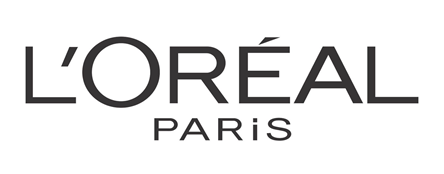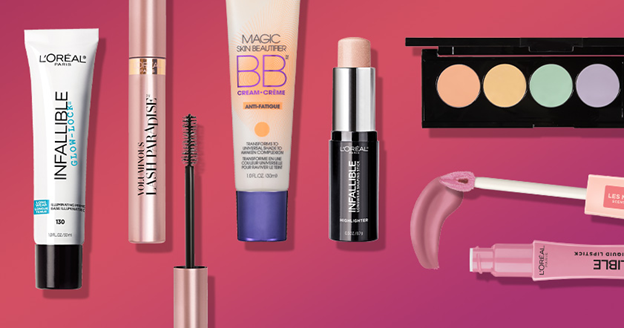Beauty knows no boundaries. Find out how this company’s strategy meets every consumer’s needs around the world! [Monday Marketing Marvels]

Are you looking for the perfect shade of lipstick?
How about the right palette combination for your skin?
Do you want to do a hair makeover and dye your hair purple?
Well, here’s some good news for you!
This company has everything you can imagine for all your beauty needs―from makeup to skin care to hair products, and a whole lot more!

L’Oréal S.A., or L’oréal, is a French personal care company headquartered in Clichy, France. Its name came from Oréale, a hair dye formula that was developed by its founder, French-German chemist Eugѐne Paul Louis Schueller, in 1909.
Since the beginning, L’Oréal’s focus has always been on research and innovation in the beauty industry. In 1920, the company only had three chemists on its team… 30 years later, it had 100 chemists formulating its products.
By 1984, L’Oréal’s chemists further grew to 1,000. As of 2020, the company employs approximately 82,000 chemists.
From just manufacturing hair coloring products, L’Oréal developed into a company that also produces other beauty and cleansing products. Today, it has become the world’s largest cosmetics company with a focus on hair color, skin care, sun protection, makeup, and perfume.
Beauty For ALL: L’Oréal’s Universalization Strategy
L’Oréal operates with a vision:
For 111 years, the company has consistently focused on innovating its products, leading to its portfolio of over 500 cosmetic brands. It has also expanded its business by acquiring various cosmetic companies such as The Body Shop, NYX Cosmetics, Carol’s Daughter, IT Cosmetics, MediFace, etc.
As a brand that caters to the needs and demands of consumers in the beauty industry, how is L’Oréal able to appeal to its target market?
Through its Universalization Strategy!
For L’Oréal, universalization means “globalization that captures, understands, and respects differences.”
The company ensures that it will stay close and relevant by offering “tailor-made” beauty products that meet the expectations of consumers across the globe.
To prove that it is serious about its strategy, L’Oréal developed a worldwide network of Research & Innovation and marketing hubs, one for each of its strategic markets―US, Japan, Brazil, China, India, and South Africa.
Here are some reasons why L’Oréal was able to effectively adapting to different cultures around the world:
- Flexibility
L’Oréal’s vision of becoming a global company while localizing its products requires it to be able to quickly and efficiently respond to current consumer demands.
Its global marketing strategies involve studying and analyzing the needs for beauty products based on consumers’ personalities, local histories, cultures, and traditions. It needs to be flexible enough to adapt to rapid changes in preferences, which it is able to do through its administrative, marketing, sales, manufacturing, and human relations teams seamlessly working together.
Changes in preferences also refer to changes in consumers’ shopping habits. One of the reasons L’Oréal was able to still record profits in the first half of 2020 even amid the pandemic is because of its strong digital and e-commerce presence.
- Choosing the Right Marketing Strategy
For any marketing strategy to be effective, the marketer has to understand who the target audience is and how to best address that target audience.
In the case of L’Oréal, one way for the company to adapt to different cultures is through multicultural marketing, or ethnic marketing.
[Ethnic Marketing – The practice of marketing to one or more audiences of a specific ethnicity. It usually takes into account a specific group’s cultural references such as traditions, religions, languages, celebrations, etc.]
Through this strategy, L’Oréal is able to gain knowledge about consumer differences in beliefs and perceptions, enabling the company to have its products and campaigns adapt to the demands of a specific local market.
- A Diverse Team of Professionals
L’Oréal believes that the most effective way to progress is by being open to new trends and ideas from around the world. This is what shapes the mindsets of its employees.
Having an entrepreneurial spirit, open-mindedness, and passion for excellence enables L’Oréal’s employees to give importance to each individual and their talents. These individuals, who are from differing cultural backgrounds, are also able to contribute their knowledge and ideas to the company.
As a result, L’Oréal was able to create an extensive portfolio of different brands for different cultures―Shu Uemura for the Japanese market, Giorgio Armani for the Italian market, The Body Shop for the British market, and Soft-Sheen Carson, Kiehl’s, and Maybelline for the American market.
- Segmenting Products to Cater to Appropriate Consumer Groups
As part of the company’s marketing tactics, it created four brand divisions that correspond to different consumer groups:
Consumer Products. In this product line, L’Oréal enhances emerging trends to create the most relevant and sustainable beauty products and experiences for every consumer worldwide.
L’Oréal Luxe. This group of beauty products consists of a strong, balanced, and complementary portfolio that meet the needs of consumers at every price level.
Professional Products. Founded by the L’Oréal Group over 110 years ago, this division aims to support hairdressers and develop the hair care industry in a sustainable way.
Active Cosmetics. Recognized as the world leader in dermocosmetics, this line has international skincare brands that are recommended by healthcare professionals and distributed in healthcare outlets worldwide.
- Product Availability and Accessibility
In order to make its products accessible to consumers, L’Oréal’s has made them available through various distribution channels such as wholesalers, retailers, groceries, pharmacies, supermarkets, department stores, and online.
The company’s online shop has been one of the leading contributors for its sales growth in recent years.
Products under this line come from beauty brands L’Oréal Paris, Maybelline New York, Garnier, and NYX Professional Makeup.
This includes brands such as Lancôme, Yves Saint Laurent, and Giorgio Armani.
L’Oréal’s Active Cosmetics portfolio is composed of six brands that originated from France and the US.
In the past five years, L’Oreal S.A. has recorded a revenue of:
- EUR 25.3 billion in 2015
- EUR 24.9 billion in 2016
- EUR 26.0 billion in 2017
- EUR 26.9 billion in 2018
- EUR 29.9 billion in 2019
With the help of some of its organizational processes and marketing strategies, L’Oréal is able to cater to its target market’s needs and establish itself as a world leader in the beauty industry.
L’Oreal S.A.’s Earning Power: Valens Research vs. As-reported numbers
L’Oreal S.A. (OR) makes for a great case study that we come back to regularly. One great reason?
The company has proven itself to be a better earning power generator than investors might think.
So, how well has L’Oreal S.A. been growing its business in the past years?
The research doesn’t lie—nor do the results. Earning power (the blue bars) continues to show results higher on average than what traditional databases show.
The blue bars in the chart above represent L’Oreal S.A.’s earning power (Uniform Return On Assets). Despite falling from 73% in 2004 to just 34% in 2005, L’Oreal S.A. is still showing strong profitability. Its Uniform ROA ranged between 26% and 37% in the past fifteen years, or an average of about 30%. Its Uniform ROA is at 27% in 2019.
The global ROA is just 6%.
The orange bars are the company’s as-reported financial information. If you relied on these numbers, you will see a company with massively understated profitability. As-reported ROA (return on assets, a measure of earning power) shows a 17% peak in 2004 that dropped to just 7% in 2005. Its as-reported ROA ranged just between 6% and 8% in the past fifteen years.
That’s what you’ll see in Yahoo Finance, Google Finance, and most other databases.
The company’s stock price also performed better than the rest of the stock market over the decade, which we can see in the blue line in the chart below. Its returns have been well above the market.
The numbers show that L’Oréal has been doing well and making a profit.
As a leading cosmetics company, L’Oréal believes that beauty is a “powerful force” that moves people. It is a universal aspiration that crosses time, countries, and cultures.
The company believes that beauty is more than just looking good; it is also an inner force that makes people feel good about themselves, having confidence in who they are and what they want to be.
For over a century of being dedicated to its sole vocation, L’Oréal assures every consumer around the world that despite constant changes in trends and demands, it will continue its quest to “create THE beauty that moves the world.”
About The Dynamic Marketing Communiqué’s
“Monday Marketing Marvels”
Too often, industry experts and the marketing press sing the praises of some company’s marketing strategy.
…Only for the audience to later find out that their product was a flop, or worse, that the company went bankrupt.
The true ROI in marketing can’t be separated from the business as a whole.
What good is a marketing case study if one can’t prove that the company’s efforts actually paid off?
At the end of the day, either the entire business is successful or it isn’t. And the role of marketing is always paramount to that success.
Every Monday, we publish a case study that highlights the world’s greatest marketing strategies.
However, the difference between our case studies and the numerous ones out there, is that we will always make certain that the firm really did generate and demonstrate earning power worthy of study in the first place (compliments of Valens Research’s finance group).
By looking at the true earnings of a company, we can now rely on those successful businesses to get tips and insights on what they did right.
We’ll also study the greatest marketing fails and analyze what they did wrong, or what they needed to improve on. We all make our mistakes, but better we learn from others’ mistakes—and earlier, rather than later.
Hope you found this week’s marketing marvel interesting and helpful.
Stay tuned for next week’s Monday Marketing Marvels!
Cheers,
Kyle Yu
Head of Marketing
Valens Dynamic Marketing Capabilities
Powered by Valens Research
www.valens-research.com









